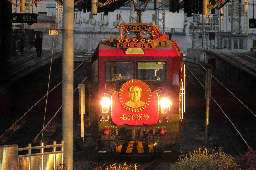Skytrain is the rapid transit network for the greater Vancouver metro area. Consisting of three lines and 53 stations, the network is the longest rapid transit system in Canada and one of the longest fully automated rapid transit systems in the world. The system primarily runs on elevated track with underground sections in the downtown area and a handful of short at-grade segments. Daily weekday ridership is around 550,000.
First showcased at the 1986 World Exposition, the original Expo Line ran from uptown New Westminster to central Vancouver. Since then it has been expanded to Downtown Vancouver and the suburbs in Surrey (via a transit only bridge). Most of the system is built above former BC Electric Railway right of way and the downtown sections makes use of acquired Canadian Pacific Railway tunnels to reduce construction costs. The Expo Line is the busiest of the three lines as it runs through major developed areas and connects key commercial and residental centers.
The Millennium Line was the first major expansion and opened in 2000. The Line splits at Columbia station in New Westminster and loops back through Coquitlam and Burnaby and connects with the Expo Line at Broadway station, a major transit hub.
The next major expansion was the Canada Line. Completed in 2010 for the Winter Olympic Games, it connects downtown Vancouver to central Richmond and Vancouver International Airport. The construction of the Canada Line was mired in many controversies owing to its public-private (:disgost:) funding and scandals involving the contractors. The system was also built using a different power system that made it incompatible with the existing network, and requiring its own fleet of trains and a separate maintenance facility. (Capitalism breeds efficiency)
Since 2010 there have been three major extensions proposed. The Evergreen extension was completed in 2016 and expanded the Millenium Line into central Coquitlam, the Arbutus extension is currently under construciton and will run under the busy Broadway corridor, and a further extension of the Expo Line into Surrey and Langley is currently being planned.
Unlike many other rapid transit networks, Skytrain is fully automated and uses a moving block around each individual train (in contrast to fixed signal blocks). This allows trains to be signalled very close together (~90 seconds during peak hours) and allows Skytrain to have high on time reliability and relatively high line capacity despite the smaller trains.
Another unusual feature are the trains’ propulsion system. Instead of a conventional electric traction motor, the Skytrain uses linear induction motors (LIMs) to pulls pull the trains along (with the exception of the Canada Line, which uses conventional train motors). Instead of the wheels being powered, a central conducting “rail” generates a magnetic field via eddy currents and drags the train along. Effectively, the train is like a maglev that doesn’t levitate. LIMs do allow trains to go up steeper grades but otherwise is rare in most transit networks because conventional electric motors are robust and have more universal maintenance support. The LIMs also produce a distinctive hum as the train accelerates due to the phase switching of the magnetic coils. This sound is most prominent on the older Mk.1 Innovia metros.
Resources for Palestine :palestine-heart:
Queer stuff? Come talk in the queer megathread!! :sicko-queer:
Monthly Neurodiverse Megathread and [Monthly ND Venting Thread]


i also do not want the hard workers' weath distributed to lazy people, that is why i am a communist